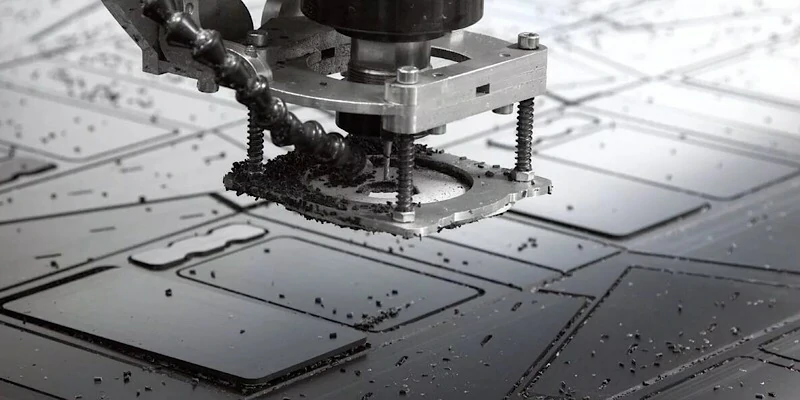Title: CNC Processing Method of Aluminum Nitride Ceramics
Introduction:
Aluminum nitride ceramics have gained significant attention in various industries due to their exceptional thermal conductivity, electrical insulation properties, and excellent mechanical strength. CNC (Computer Numerical Control) machining is a widely adopted method for processing aluminum nitride ceramics, allowing for precise and efficient manufacturing of complex shapes. In this article, we will explore the CNC processing method of aluminum nitride ceramics, discussing its advantages, challenges, and applications.
1. CNC Machining Process for Aluminum Nitride Ceramics:
The CNC machining process involves the use of computer-controlled machinery to precisely shape and carve aluminum nitride ceramics. The process usually includes the following steps:
a. Designing the CAD Model: The first step is to create a comprehensive Computer-Aided Design (CAD) model. This step enables engineers to develop a detailed blueprint of the desired ceramic component, including its dimensions, features, and tolerances.
b. Programming the CNC Machine: Once the CAD model is finalized, the next step involves programming the CNC machine. This programming step includes specifying cutting paths, tool sizes, feed rates, and other parameters necessary for accurate material removal.
c. Setting Up the Workpiece: The aluminum nitride ceramic workpiece is securely clamped onto the CNC machine’s worktable, ensuring stability during the machining process.
d. Machining Operations: CNC machines utilize various cutting tools, such as drills, end mills, and lathes, to perform precise material removal. These tools move along the programmed toolpaths, accurately shaping the aluminum nitride ceramics. This process may involve milling, turning, drilling, or grinding operations.
e. Quality Control: After the machining process is complete, the final product undergoes thorough quality control checks. These checks ensure dimensional accuracy, surface finish quality, and adherence to specified tolerances.
2. Advantages of CNC Processing for Aluminum Nitride Ceramics:
The CNC processing method offers several advantages for manufacturing aluminum nitride ceramics:
a. Accuracy and Precision: CNC machines are highly accurate, allowing for the production of intricate designs with tight tolerances. This precision ensures consistency and reliability in the final product.
b. Efficiency and Productivity: CNC machining eliminates the need for manual labor-intensive processes, resulting in increased productivity and shorter lead times. The automation of tool changes and material handling reduces downtime, enabling continuous operation.
c. Flexibility: CNC machines can handle a wide range of shapes and sizes, making them suitable for the production of various aluminum nitride ceramic components. The ability to program complex geometries allows for customization and versatility in design.
d. Cost-effectiveness: Once programmed, CNC machines can produce multiple identical parts with minimal errors. This repeatability reduces material waste and lowers overall production costs.
3. Challenges in CNC Processing of Aluminum Nitride Ceramics:
Despite its numerous advantages, CNC machining of aluminum nitride ceramics does present some challenges:
a. Material Hardness: Aluminum nitride ceramics are relatively hard materials, making them challenging to machine without proper tooling. Specialized tools with high cutting speeds, fine edges, and wear-resistant coatings are necessary to ensure effective material removal.
b. Fracture Sensitivity: Aluminum nitride ceramics have a higher propensity for fractures and chipping during machining. Careful consideration must be given to tool selection, cutting parameters, and coolant application to minimize these issues.
c. Surface Finish: Achieving a smooth surface finish on aluminum nitride ceramics can be challenging due to the material’s high hardness. Additional post-machining processes, such as polishing or laser cutting, may be required to achieve desired surface quality.
4. Applications of CNC Processed Aluminum Nitride Ceramics:
The CNC processing method finds extensive applications for aluminum nitride ceramics, including but not limited to:
a. Heat Sinks: Aluminum nitride ceramic heat sinks are widely used in electronic devices to dissipate heat efficiently due to their excellent thermal conductivity.
b. Insulating Components: The electrical insulation properties of aluminum nitride ceramics make them ideal for manufacturing insulating components, such as semiconductor substrates and high-power electrical connectors.
c. LED Components: CNC machining enables the production of complex LED components with precise geometries, allowing for enhanced performance and functionality.
d. Industrial Components: Aluminum nitride ceramics are also utilized in various industrial applications, such as cutting tools, wear-resistant parts, and fixtures.
Conclusion:
CNC processing has revolutionized the manufacturing of aluminum nitride ceramics, enabling precise and efficient fabrication of intricate shapes and designs. Despite the challenges associated with machining this hard material, CNC machines offer significant advantages in terms of accuracy, productivity, flexibility, and cost-effectiveness. As technology continues to advance, CNC processing will further contribute to the development of innovative aluminum nitride ceramic products across various industries.
.webp)



